
Rediscovering Japan

Rediscovering Japan
Travel (Sado (Niigata Prefecture))

by tomizuta
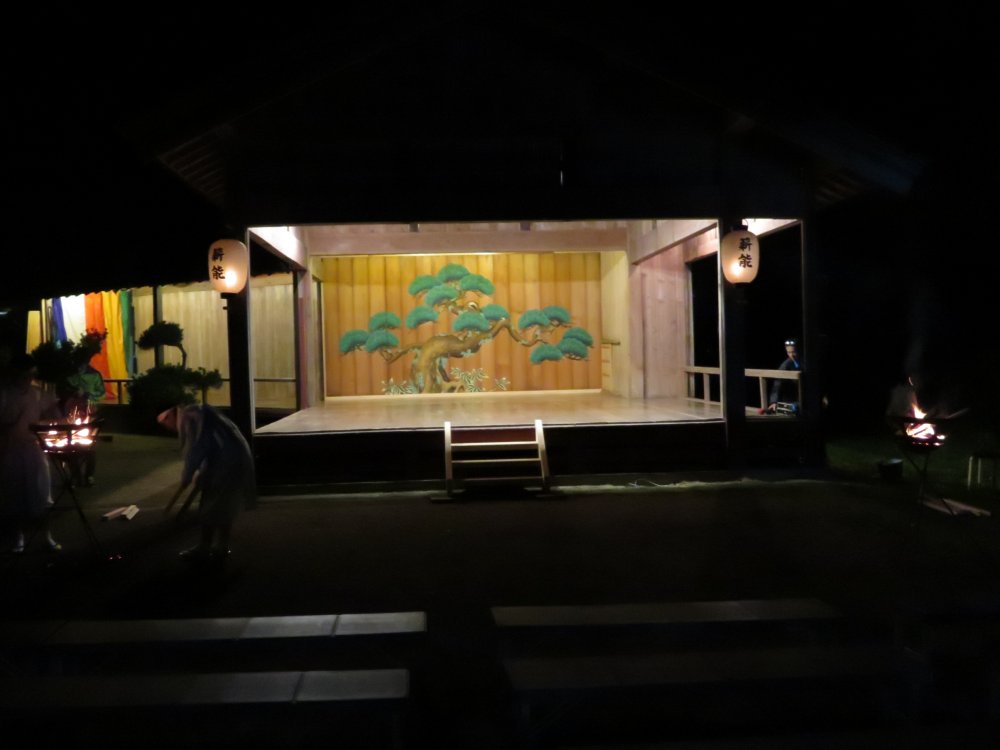
The Noh Theatre at Shiizaki Jinja Shintou shrine after the performance. Sado has a rich cultural tradition, Noh in particular.
In July 2019 we made a four day excursion to Sado Island. The island with an area of 850 square kilometers is the second largest island of Japan (excluding the four major islands of mainland Japan) after Okinawa Main Island and is larger than the area of the 23 wards of Tokyo. Not much is known about Sado before the Heian era. It makes its real presence from the 12th century (late Heian/early Kamakura era) with the find of gold dust followed by large deposits of silver and gold from the 16th to 17th century. From the Kamakura era, the island was used for prominent exiles including Emperor Juntoku (early 13th century), Nichiren (founder of the Nichiren Buddhist sect, late 13th century) and Zeami who established Noh theater performance together with his father Kan-ami, 15th century). After the find in the early 17th century of the large gold deposit that lasted to the last century, the island was brought under direct government of the Tokugawa Shogunate. All these factors combined to the development of a rich cultural tradition on the island, in particular Noh. The population in the Aikawa gold mine area in the Edo era was 50,000. The population in Nagasaki in the 17th century was 60,000, so the area must have really flourished in those days. The total population of Sado has dwindled to less than 60,000 half of its peak of 120,000. We saw various efforts on the island to promote sightseeing and encourage visits to the island.
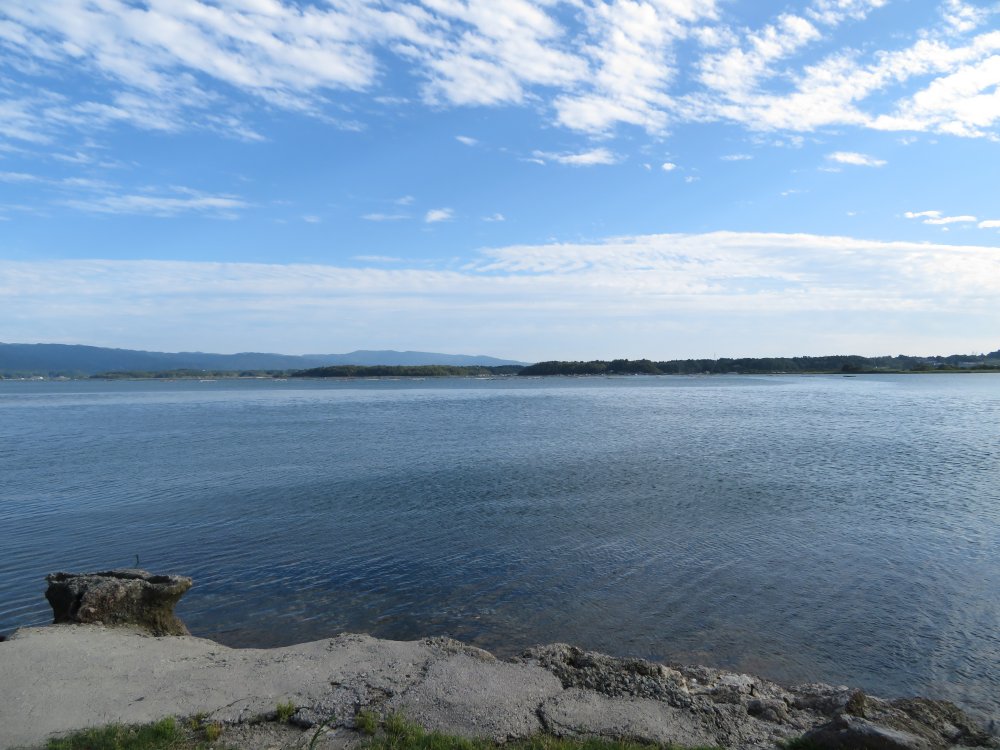
Lake Kamo near Ryoutsu Port is one of the largest brackish water lakes in Japan.
We left Tokyo in the morning to Niigata Station which took two hours on the Jouetsu Shinkansen. From there we went to Niigata Port to take the Sado Kisen Jetfoil service to Ryoutsu Port. The Jetfoil cruises at a maximum speed of eighty kilometers per hour and takes sixty five minutes to Ryoutsu.
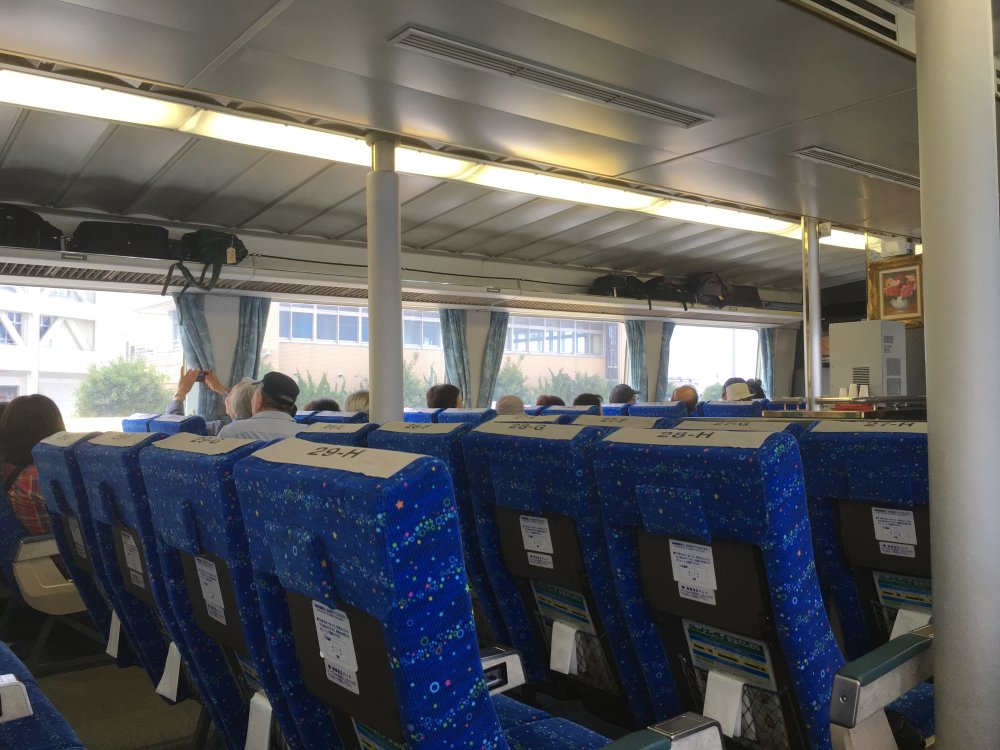
The Sado Kisen Jetfoil service was like being on an airplane. It can cruise at eighty kilometers per hour once it takes off.
There was still time, so we decided to first visit Shiizaki Suwa Jinja where the evening Noh performance was to be held. I learned from the explanation on the website of Sado City’s tourism office that the shrine was established in 1376 likely as the protector shrine for the local chieftain, the Kuchi-Honma clan. There are over 2,000 Suwa Jinjas all around Japan, established there by inviting the deity of Suwa Taisha in Nagano Prefecture as protector of the areas. In the early 13th century, Sado was put under direct control of the Kamakura military government who assigned the Honma family to govern on their behalf. Eventually family feuds occurred, resulting in many Honma clans bearing the names of where they controlled (such as Kuchi-Honma, Sawada-Honma, Hamoti-Honma) to differentiate. The powerful feudal lord of Echigo (Niigata) conquered Sado in 1589 and the island came under the control of Echigo until the newly established Tokugawa Shougunate took it under its control in the early 17th century. We entered the shrine grounds from the entrance torii gate and approached the main shrine (honden) at the far end. In front of the honden was the open-air Noh theatre built in 1902 according to the description by the entrance gate. The seats for the evening performance were being prepared.
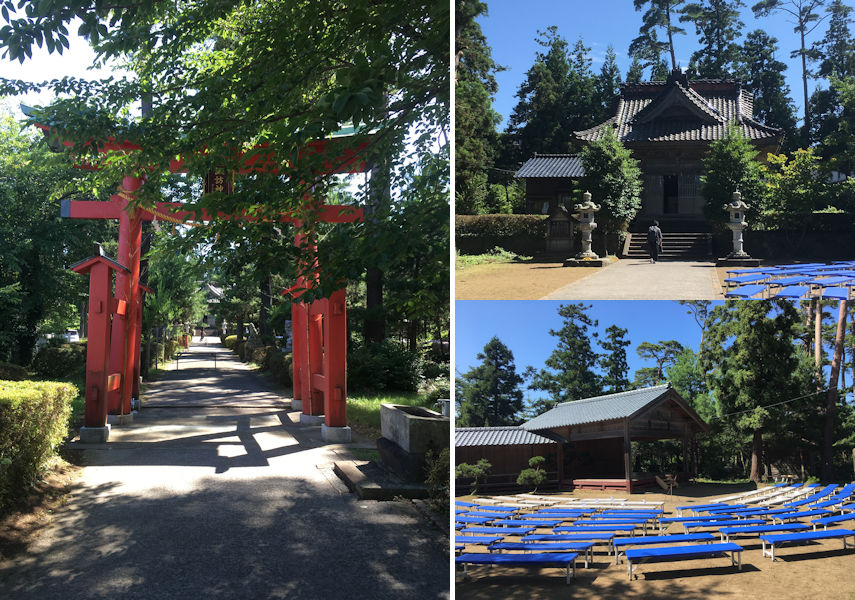
The entrance torii gate of Shiizaki Suwa Jinja (left), the main shrine (upper right) and the open air Noh theatre built in 1902 (lower right).
As we had time before the evening Noh performance, we first went to Toki Forest (Toki-no Mori Park). The admission fee is 300 yen. Sado is known for the breeding of the endangered bird Toki (crested ibis). Artificial breeding started in the end of the last century followed by the release of birds into the wild. Chicks from the released birds have also started to fledge. You can view the birds in the observatory cages as you approach the exhibition facility. We learned a lot about the preservation efforts in the facility. Part of the facility is a corridor from where you can see the breeding cages in the back. Another five minutes’ walk brought us to Toki Fureai Plaza (“get closer to Toki” plaza) which is a facility where you can view the birds in a larger secluded area at closer proximity. I was very pleased of this opportunity to see the Toki birds for the first time.
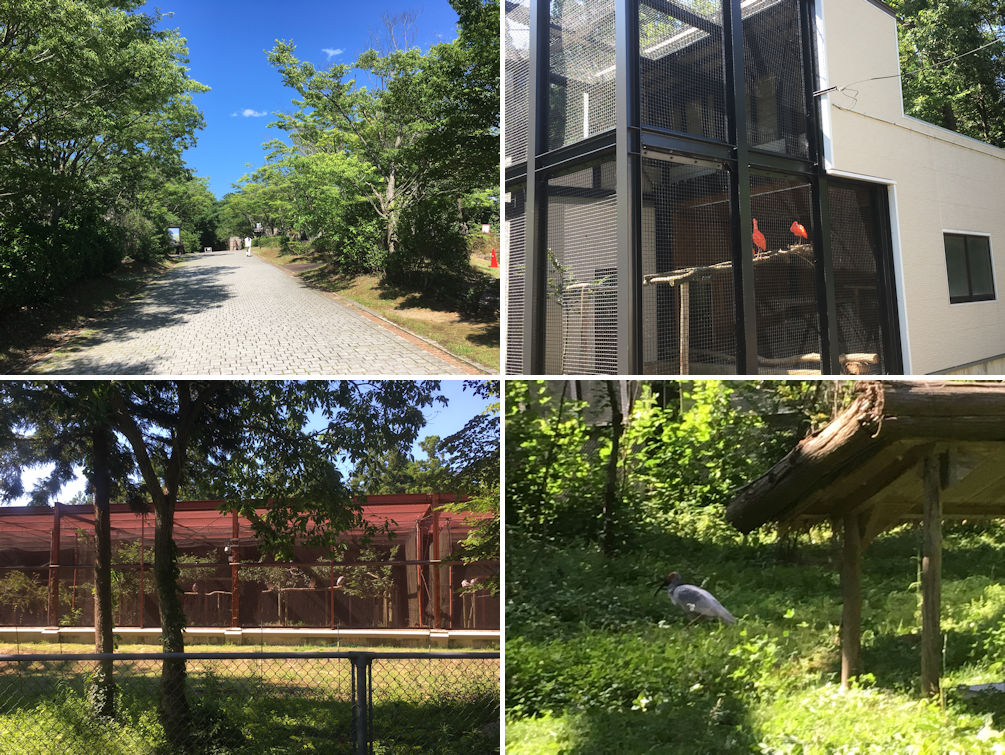
The entrance to the park (upper left), breeding cages (lower left), the Toki birds in the observatory cage (upper right) and a Toki in the Fureai Plaza (lower right).
There was a bus service, Takiginoh Liner, from our onsen ryokan in Ryoutsu to Shiizaki Suwa Jinja at 500 yen for a round trip. Noh performance is held on the first Saturday of the months from May to October (except August). The performance started at 19:30 with the lighting of firewood, followed by a guide to the evening’s performance which was Yashima. Yashima is a play featuring the ghost of Yoshitsune Minamoto, the tragic hero in the Genji and Heiji feud. They allow photography as long as flash is unused. The roots of Noh is a performance to the Gods on religious sites. It was an interesting experience to enjoy the open air play in a classic setting. The play time was seventy five minutes including a Kyougen between the two acts.
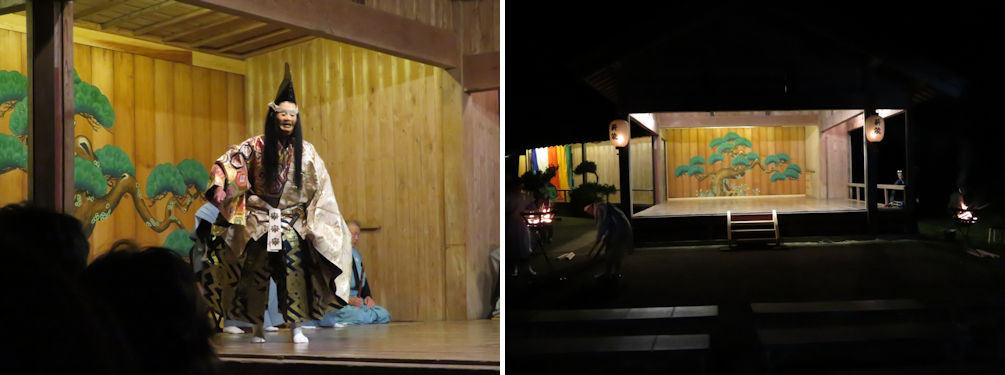
The play was Yashima (left). The Noh theatre after the play (right).
The following morning, we traveled north west to the Aikawa former gold
mine area. We first entered a local sake brewery shop to purchase some
local sake. There are several sake breweries on the island which grows
good rice. I asked the shoplady where the brewery was. “It used to be right
behind us but moved to another site to the east, as the quality of the
water here became unsuitable for brewing sake” she told us. I bought a
seasonal Namazake (sake without the final heating) honjouzou to enjoy with
our friends and a 180 milliliter cup of their regular sake. Their sake,
Kintsuru, is dry and goes very well with seafood.
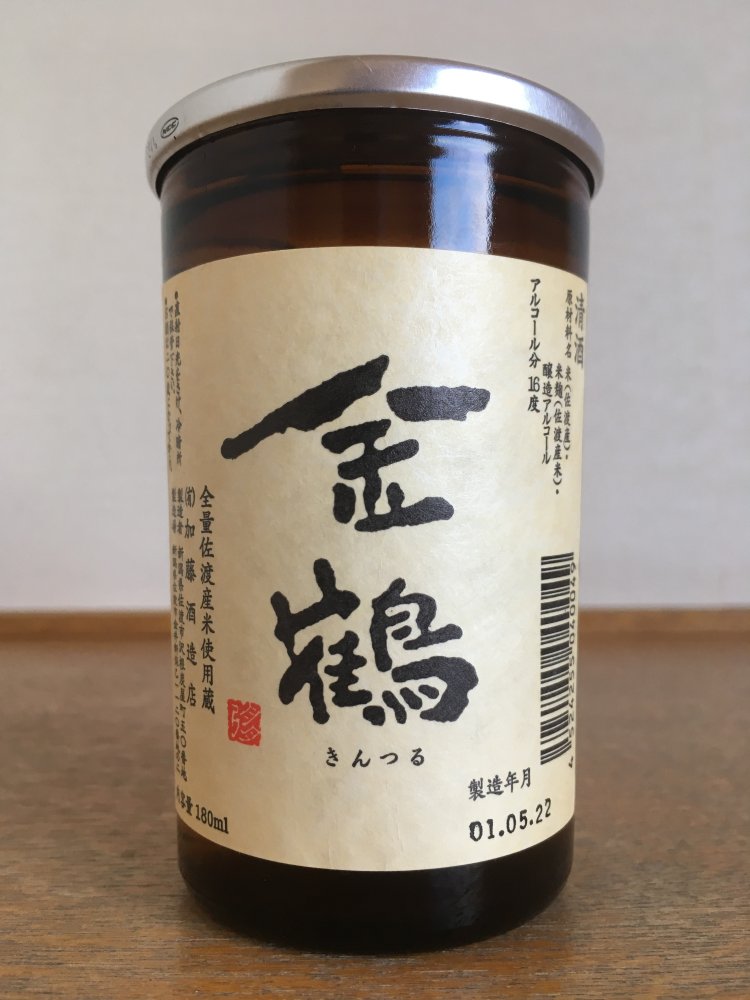
Kintsuru is dry and goes very well with seafood.
We then traveled along the shores to Senkaku Bay (Senkaku-wan). We purchased tickets for the glass bottom boat cruise at the ticket office by the car park. From there we had to walk down about twenty meters to the boat pier. The cruising time in the bay is fifteen minutes. The scenery of the bay and rugged cliffs was even more fascinating than the fish below the glass bottom. This is certainly a must-do if you visit Sado.
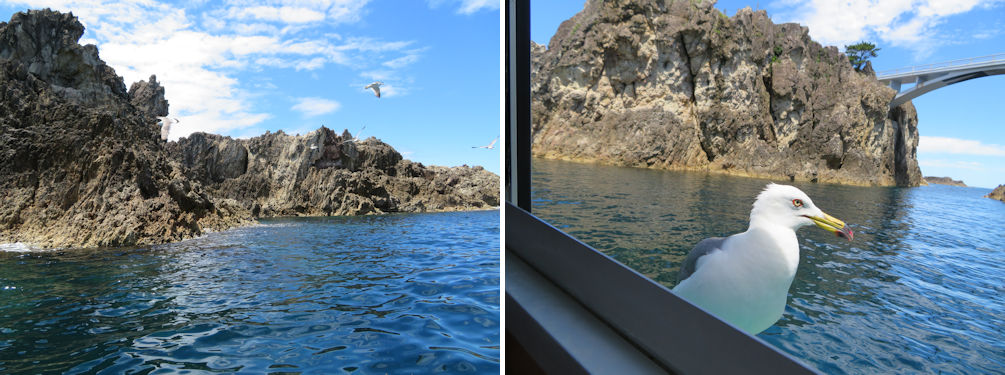
The beautiful view of Senkaku Bay (left). The seagulls were very friendly (right).
We went back to the center of Aikawa Town. We wanted to have a guided tour but were advised that such guided tours must be booked in advance, but in any event to ask at the tourist information office. The tourist information office was in a newly opened museum facility named Kirarium Sado. It was the 7th of July, which is the day of the Tanabata Festival, when you display bamboo trees, write your wish on a small sheet of paper and tag it on the trees. Luckily for us, they had a free guided tour of Aikawa as part of the festivities.

The newly opened Kirarium Sado (upper left), the walking tour Tanabata special announcement (lower left) and the Tanabata bamboo tree (right).
It was a Sunday and not many restaurants were open. Following the advice we received at the tourist information office in the newly opened Kirarium, we went to a shopping arcade district called Tenryou Doori Street. We first entered a restaurant run by a fishmonger but was unpolitely rejected by a lady saying they were completely full. We then decided to enter this quieter restaurant. We wanted of course to enjoy local food. Although limited, there were a couple of dishes with local seafood. I ordered the assorted sashimi course (sashimi-teishoku) and my wife a kaisen-chirashi (which is assorted seafood on top of a bed of slightly vinegrated rice). We found both dishes acceptable for a Sunday when the fishmarket is closed. Both dishes were priced at 1,700 yen which is not unreasonable. It appeared to be a family-run restaurant most likely busier in the evenings. The interior was quite nice. We went back to Kirarium. As we had time before the start of the guided walk at 2pm, we paid the admission fee to see the exhibits. This turned out to be packed with the most informative displays and videos on Sado and its mining heritage in particular.
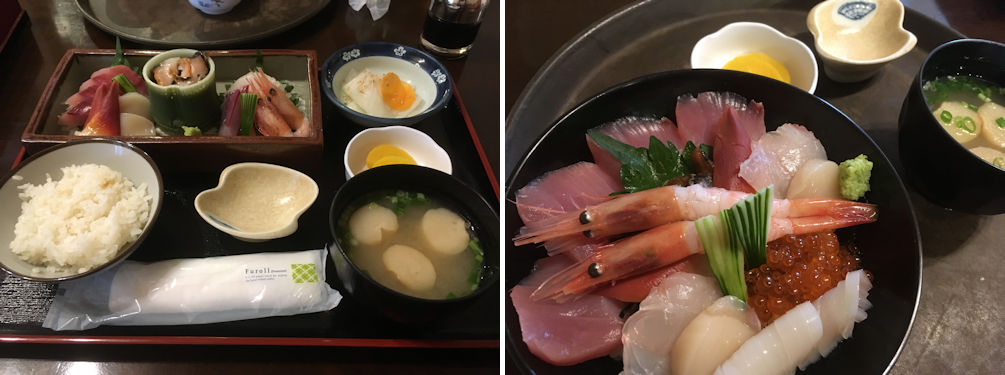
The sashimi teishoku (left) and kaisenchirashi (right).
The guided tour of Aikawa was really informative. The lady guide kept feeding us eagerly with local knowledge. For us it was difficult to follow as she would cite names and places that only the locals knew. Gradually I came to understand that many participants were from Sado, and that they were sharing with the guide the sadness of seeing the decline of the Aikawa area. The area we walked was the “shitamachi” area, the area looking down from the Governor’s Office, below (shita) and towards the shore. One of the first places she guided us to was Kotohira Jinja Shintou shrine. The shrine was at the end of an alley running from the shore. The guide told us that the shore of Aikawa had undergone several phases of land reclamation in the Edo era, and that in the early Edo era when the shrine was built to pray for maritime safety and prosperity of the gold mine, it stood at the waterfront. It is a grand shrine but appeared a bit worn and torn. I understand that the present shrine was built in the late Edo era (mid 19th century).
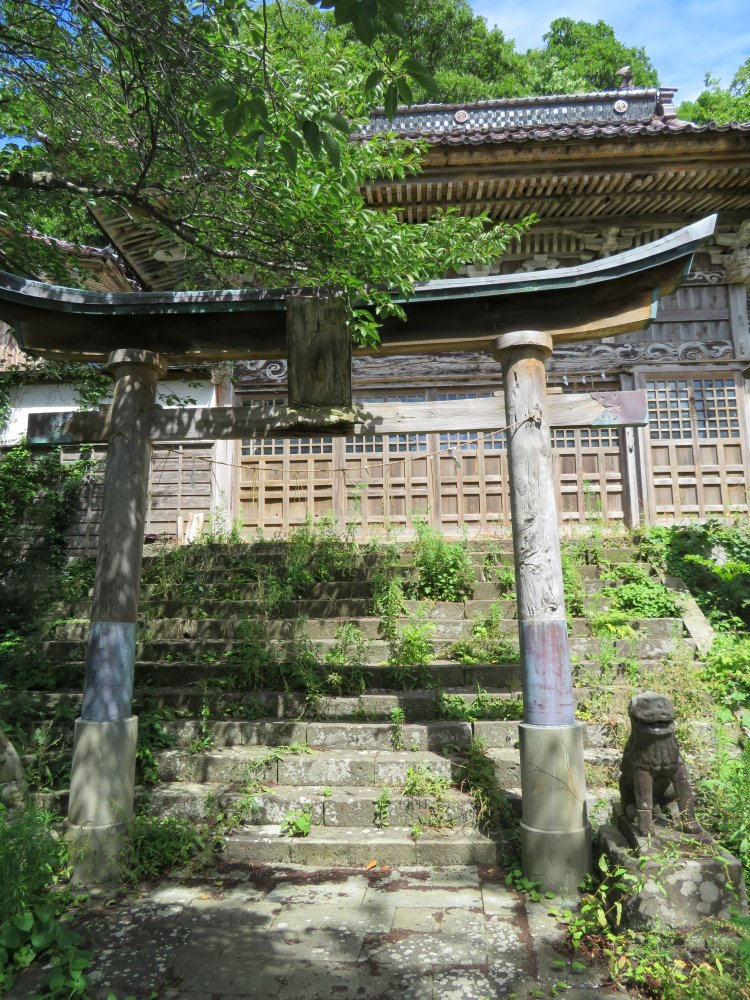
It is a grand shrine but appeared a bit worn and torn. I understand that the present shrine was built in the late Edo era (mid 19th century).
We turned left into a small path running parallel with the shoreline. “Many Buddhist Temples stood on this lane but nearly all seem to have been discontinued.” the guide told us. We could easily observe this. It was sad to see many graveyards of the Buddhist temples left unattended. As we walked on, she pointed to a car park and told us that it was the site of a large hotel. “There were five major hotels in Aikawa. Now only two remain. They all made the mistake of expanding in the 1990s while depopulation of Aikawa continued. Now the population of Aikawa is less than one tenth of its peak of 50,000” the guide explained.
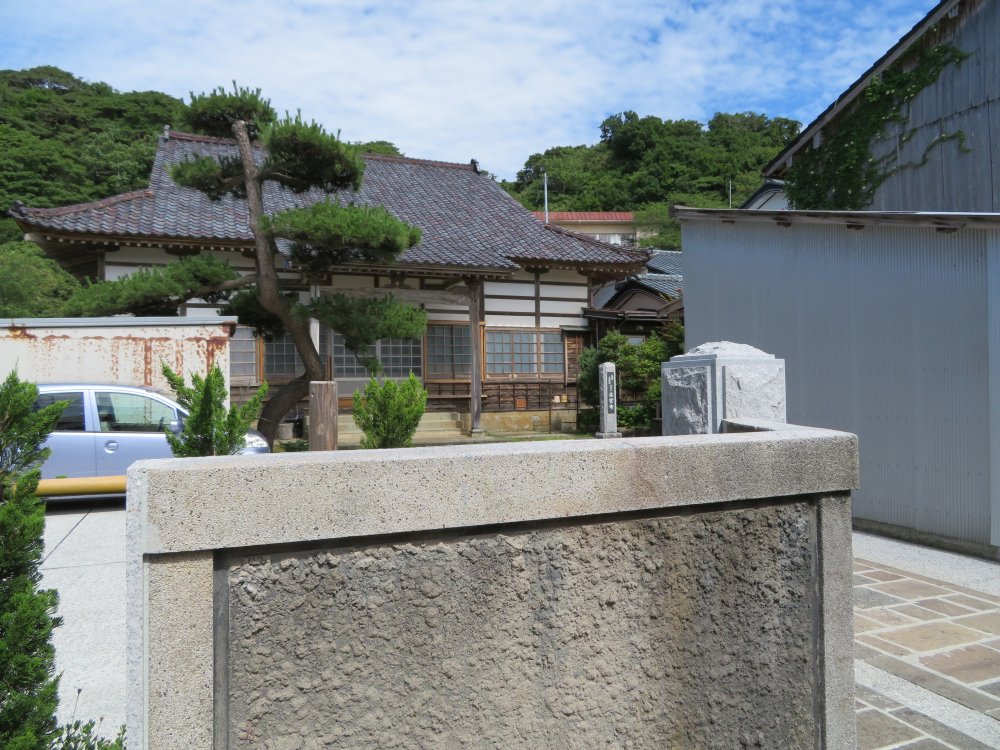
One of the few remaining Buddhist temples from the early Edo era.
From the car park, we turned right into the hills towards the teramachi area where Buddhist temples are most concentrated. Our next destination was Daianji Buddhist Temple of the Joudo sect. Here I need to talk about Chouan Ookubo. Chouan was born in a Noh actor family, climbed the ladder to eventually become a very powerful minister of the Tokugawa Shogunate in charge of all the gold and silver mines under direct control of the shogunate as well as its entire treasury. He was the first governor of Sado from 1603 to 1613. In that sense, it is understandable that he may have encouraged Noh theatres in Sado. The guide explained “he was so arrogant that he ordered the establishment of a Buddhist temple for him only, which was Daianji. He had his grave constructed while he was still alive, which was quite rare. After his death, suspicion arose about his embezzlement of the treasury, and his sons were all executed. The temple also opened its doors to all.” We took a moment to observe this grave. The view from the temple grounds was quite striking.
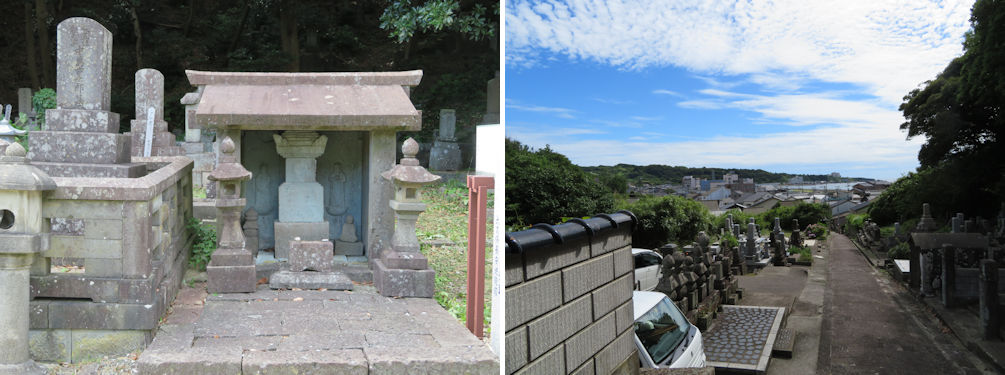
The grave of Chouan Ookubo (left) and the view of the town from the temple (right).
The guided tour ended at Tenryou Doori Street, which is where we had had lunch. It was quite a sad sight to see many shops closed and unattended. It was an interesting sixty minutes’ walk.
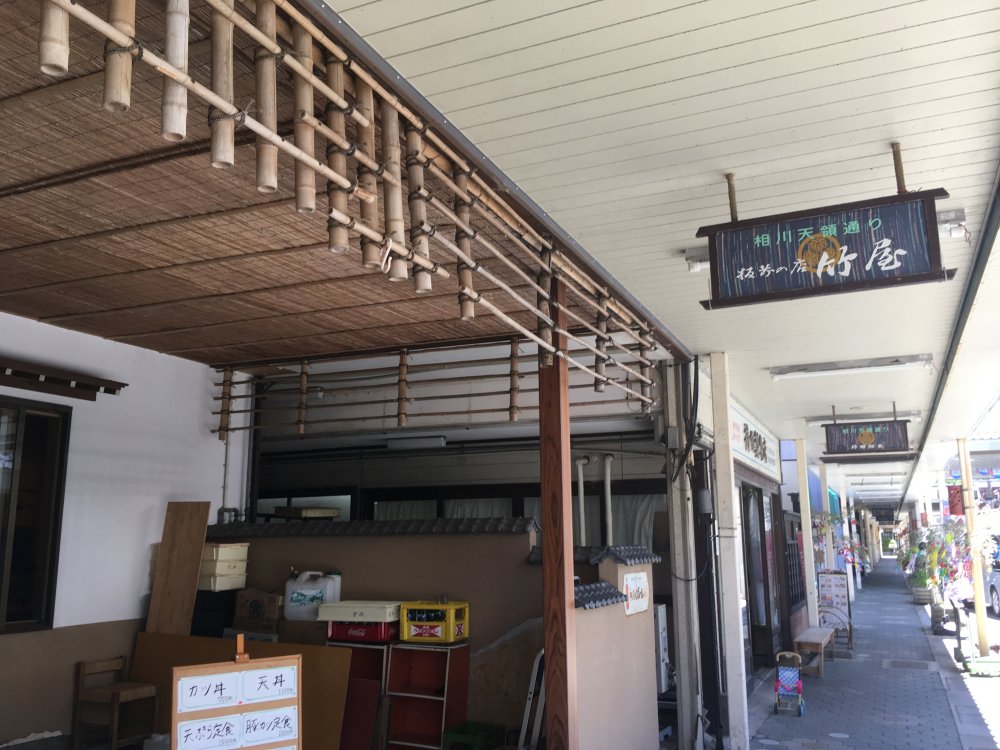
View of Tenryou Doori Street. It was sad to see many shops in the far end closed or abandonned.
We then went to the former Governer’s Office (Sado Bugyousho) first established in 1603. It was composed of three areas. The Governer’s residence, the administration offices and a separate refinery to refine the collected ore from the mines. The buildings from the Edo era were lost in the fire of 1942 but the administration office and refinery have been reconstructed and opened to the public from 2001 and 2004 respectively. The reconstruction cost was more than seven million dollars. We paid the admission fee of 500 yen per person and was shown by a staff member into the administration office. She gave us a brief introduction to the facility and asked us to explore the facility at our leisure. This was different from Hakodate Bugyousho where staff guided the visitors at some spots and even took pictures of them. I know they are doing their best to promote sightseeing but thought they could do better. By the way, photography is allowed. I was interested to see the “shirasu” which was the court where people received verdicts from the governor. We then called it a day and checked into our hotel in Aikawa.
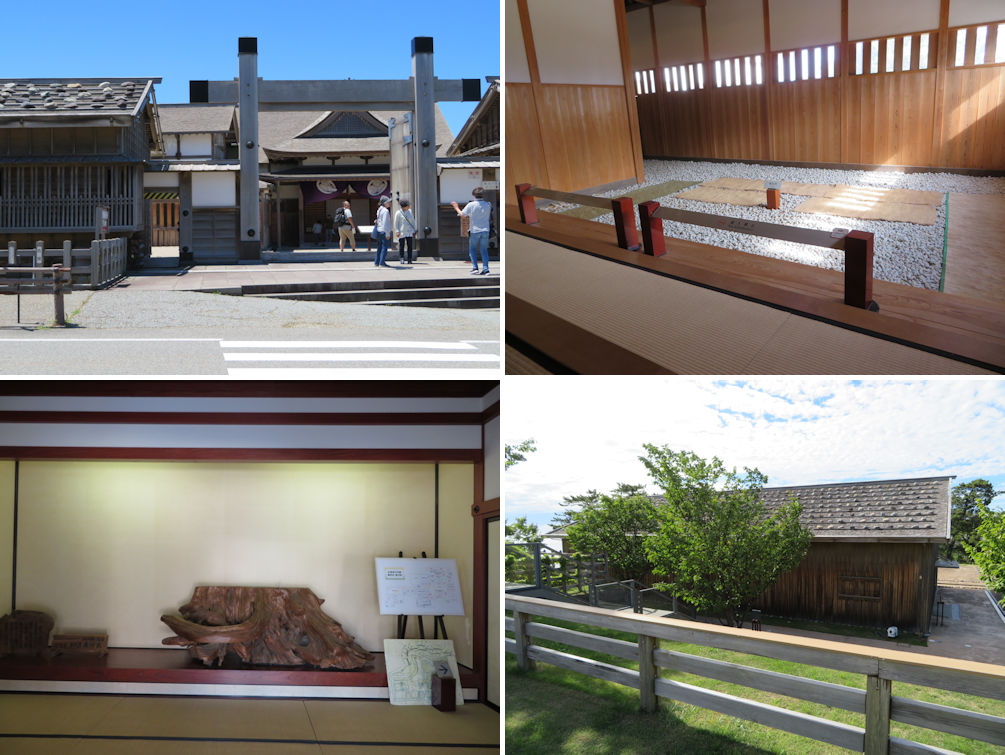
Entrance to the governor's office (upper left), the entrance room (lower left). the shirasu court (upper right) and the refinery (lower right).
We started the following morning by visiting Sado Gold Mines. We paid the admission fee of 1,400 yen (1,260 yen for JAF members) per person. This gives you access to two mine tours. One is the Sohdayu Mine where you can experience how they mined in the Edo era, and the other Dohyu Mine which is a modern mining facility that was closed in 1991. We were advised to start from the Sohdayu Mine, then exit and return to the ticket gate to enter the Dohyu Mine. It is fun to walk through the Sohdayu Mine to see the life-like dolls at work, as well as pick up information on mining in the old days.
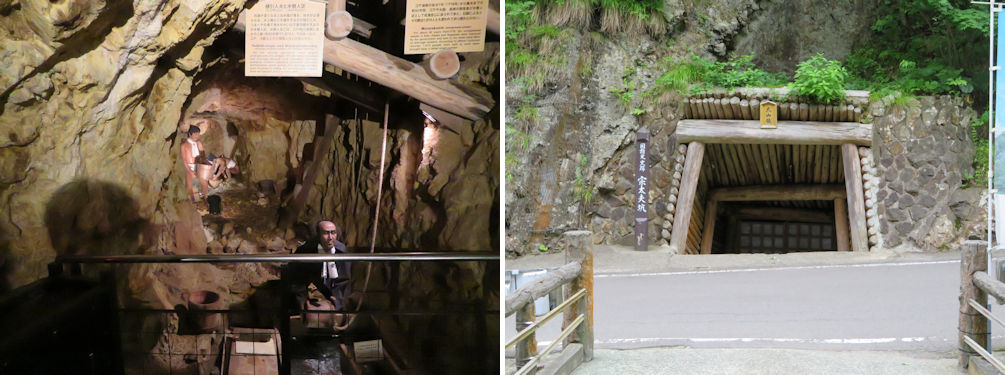
It is fun to walk through the Sohdayu Mine to see the life-like dolls at work (left). The original mine entrance of Sohdayu Mine (right).
Compared to Sohdayu, Dohyuu Mine is of course much modern as it operated till the end of the last century. We came out of the mine, and followed the signs to Douyuu-no-Warito, which is the site of an open pit mine of the early Edo era. Warito means “broken door,” characterizing the large deep cut from the mountain top.
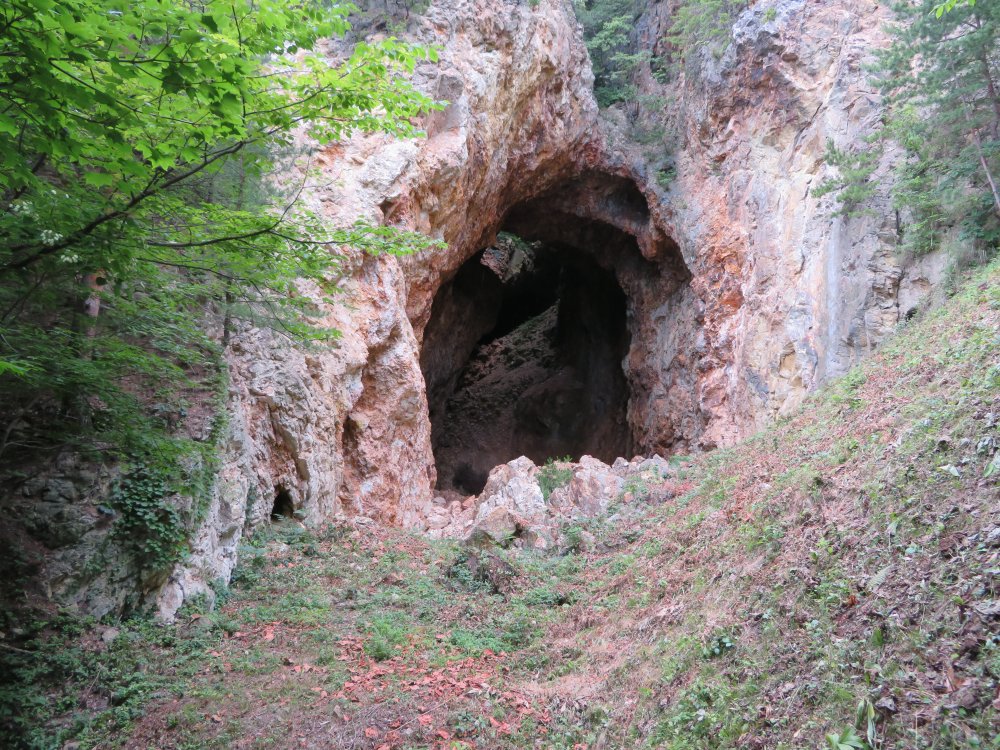
Douyuu-no-Warito, which is the site of an open pit mine of the early Edo era.
We came back from Douyuu-no-Warito and followed the signs to the exit. This was along a former rail track and through a tunnel. I guess this mine tour is something you shouldn’t miss if you are traveling to Sado.
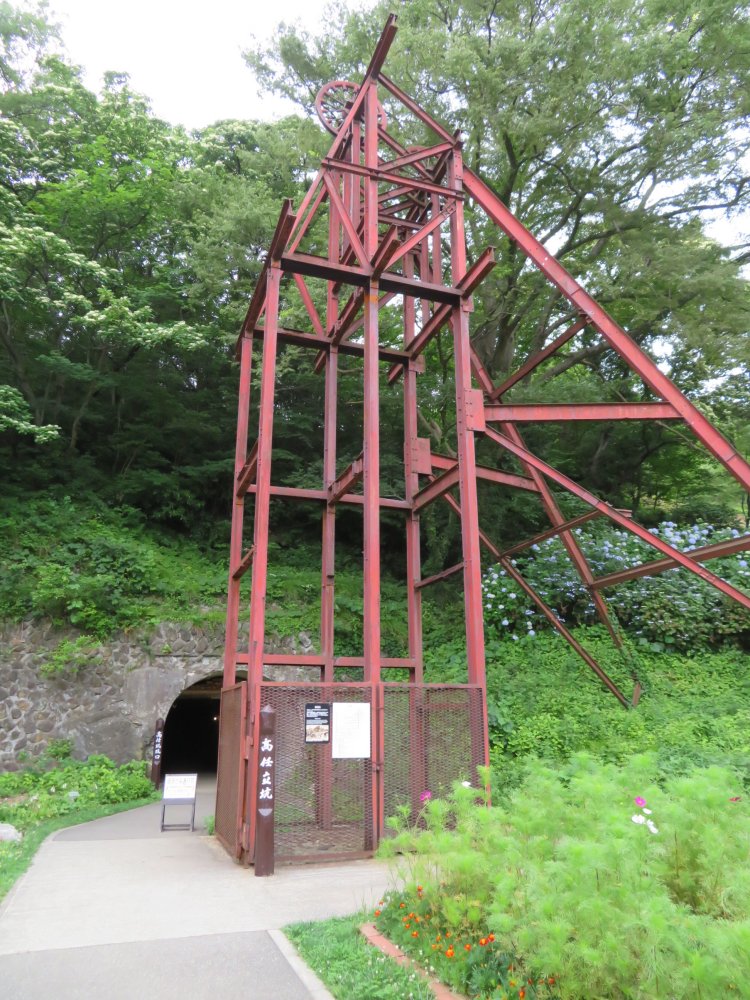
The vertical shaft of the Takatou Mine opened in 1940 after Dohyuu Mine. Mine entrance is in the back.
We made a brief stop at the Kitazawa Flotation Plant located on a lower level not far from the mine. The mine closed in 1991.
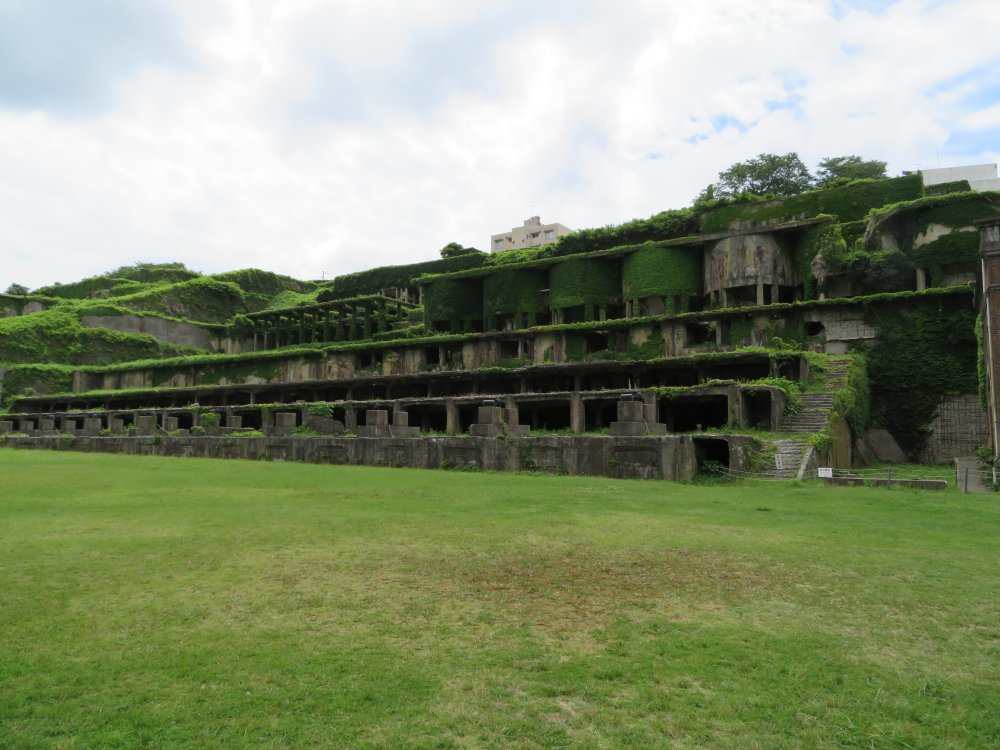
View of The Kitazawa Flotation Plant.
We headed south towards the southern coast of Ogi. On the way we passed Mano Town, where we made a brief visit to Mano-byou. This is where ex-Emperor Juntoku was cremated. Juntoku was the 84th Emperor who abdicated the throne in 1221 at the age of 24. Together with his father and ex-Emperor Gotoba, he led the plan to overthrow the Kamakura military Government and restore power to the Imperial Family. They lost and Juntoku was exiled to Sado. He was never allowed to return to Kyoto and died in Sado at the age of 44 after an exile of twenty years. Mano-byou is in a quiet forest area, meticulously maintained by the Imperial Household Agency.
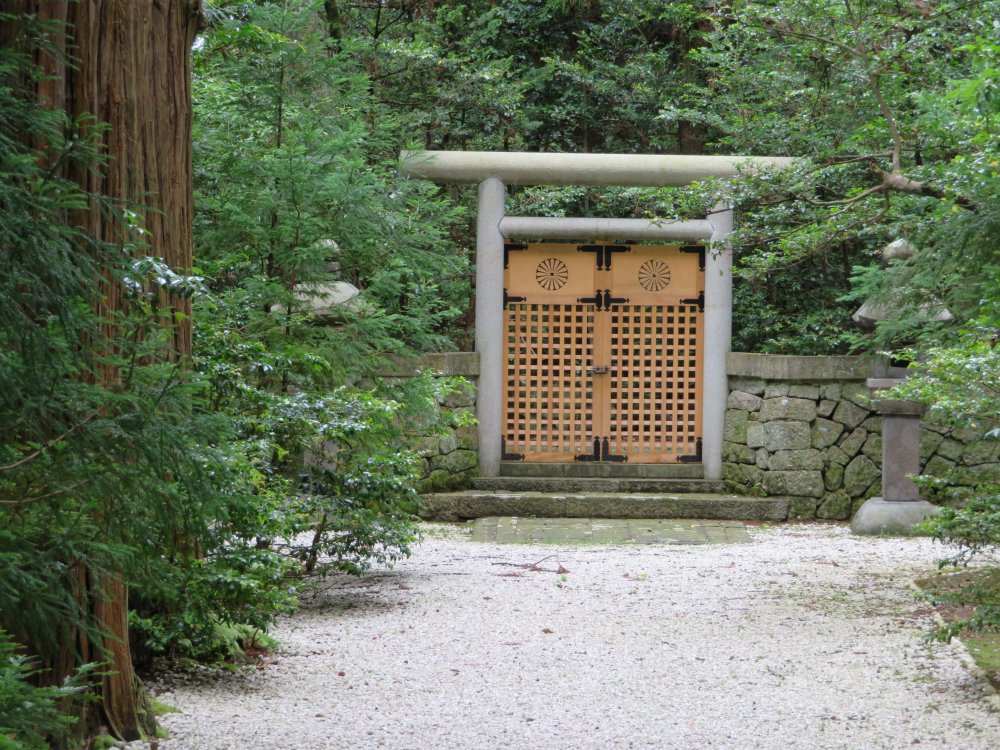
Mano-byou is in a quiet forest area, meticulously maintained by the Imperial Household Agency. The chrysanthemum is the symbol of the Imperial Family.
After a quick lunch near Ogi Port, we headed west to the historic area of Shukunegi. Shukunegi was a port town where boats from Noto Peninsula and Niigata (Echigo) would stop on their way and back to Sakata and further north to Ezo (Hokkaidou). In the early 17th century Ogi Port nearby was opened and became the main port in Sado for the Kitamaebune, which was how these boats traveling all the way from Hokkaidou to Shimonoseki and then Osaka and Edo were called. Shukunegi continued to prosper through shipbuilding and other shipping support to nearby Ogi. The densely built two story buildings in the small district is the only site in Niigata Prefecture designated as an Important Preservation District for Groups of Historic Buildings. Another heritage retained in Ogi and Shukunegi is the taraibune. This is a round tub boat from which ladies would hunt for shellfish and other seafood. Nowadays it has become more of a tourist attraction. We took a taraibune ride at 800 yen per person at Shukunegi Bay. The fifteen minutes’ cruise around the rocky inlet was a unique and enjoyable experience.
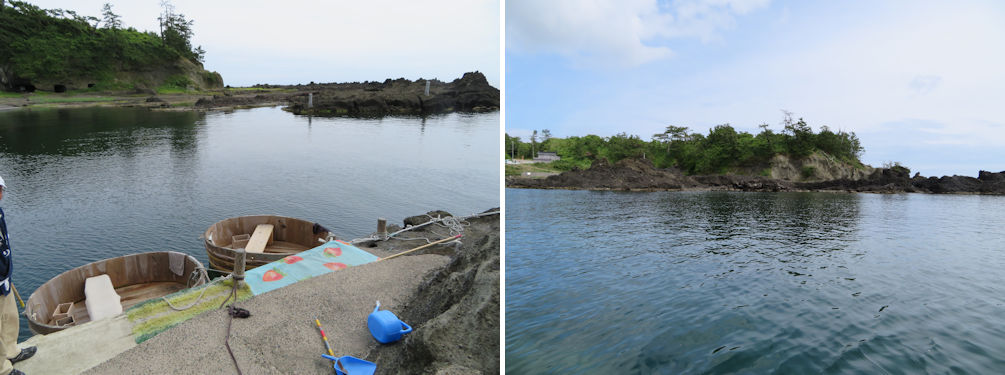
The tarai tub boats ready for boarding (left) and view of Shukunegi Bay from the tub boat (right).
From the bay, we crossed the road to enter the Shukunegi area. There was a tourist information office in the car park, where we obtained a map and a joint ticket to the buildings open to the public costing 1,000 yen. We walked through the narrow alleys and soon reached the first building open to the public. This building belonged to a wealthy shipowner active in the 19th century. It was built in the middle of the 19th century and once used as a lodging house before being converted to a museum. It is a magnificent two story Japanese building using the finest building material.

The interior of former residence of Seikurou. It is a magnificent two story Japanese building using the finest building material.
We went further to the far end where Shoukouji Buddhist temple of the Jishuu sect quietly stands. It is surrounded by dense forest. The temple was founded in the 14th century and the sanmon entrance gate dates back to the early 18th century, the oldest existing building in the area.
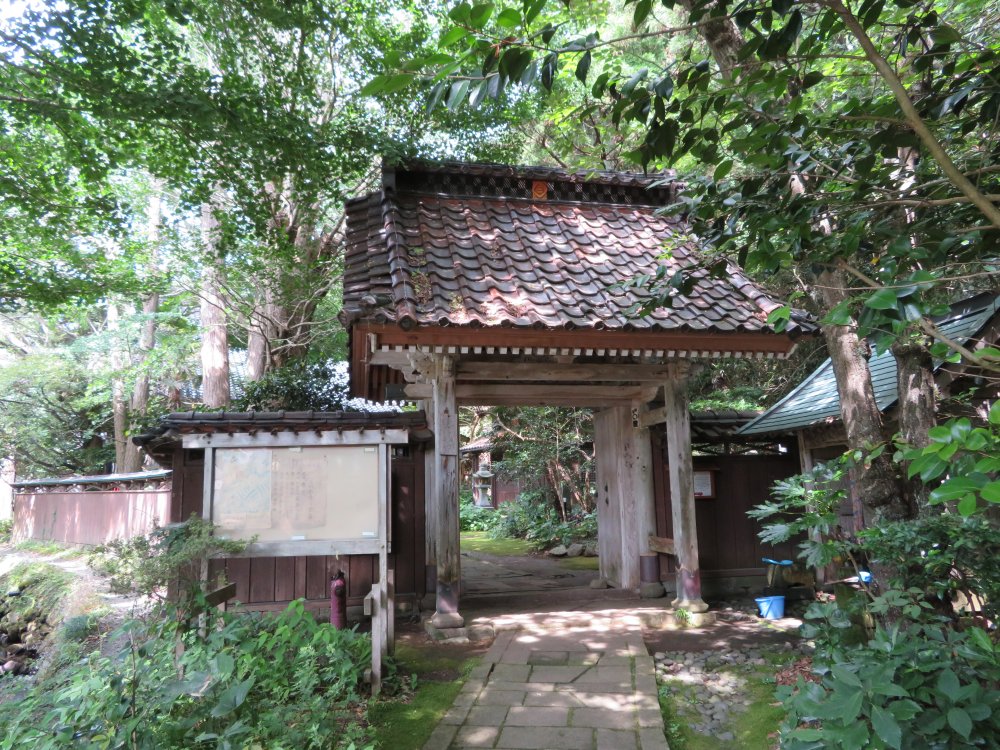
The sanmon entrance gate dates back to the early 18th century, the oldest existing building in the area.
We briefly visited the remaining prominent historical buildings including Sankakuya (triangular building), Kanekoya (built before mid-19th century) and the only western style building, the former post office built in 1921.
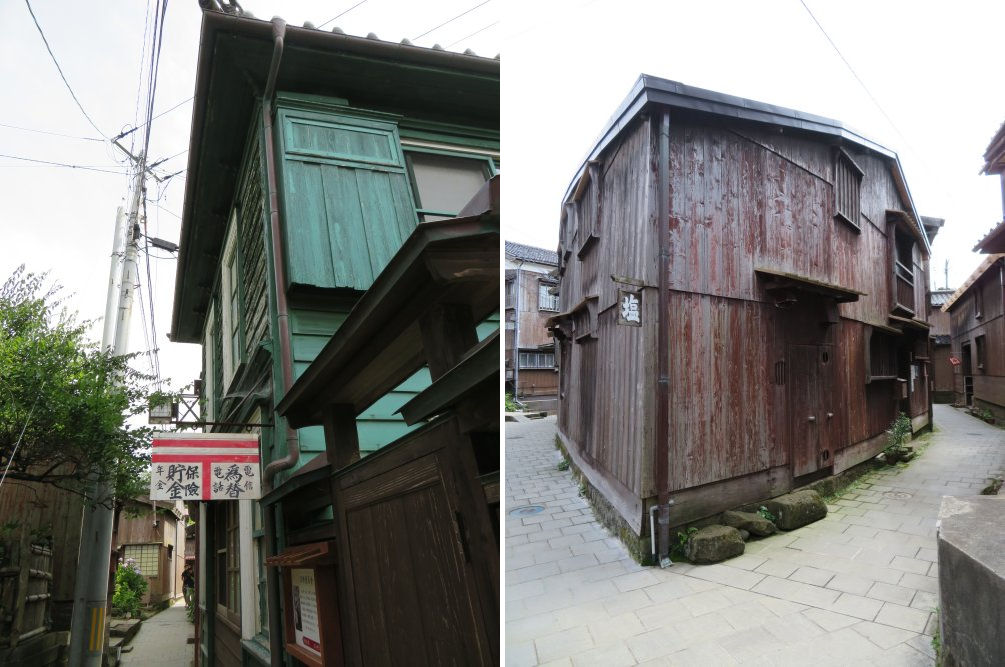
The only western style building, the former post office built in 1921(left) and the triangular building (right).
Before checking in at our onsen ryokan in Ogi, we visited the Ogi Local History Museum. This is a museum opened in 1972 by converting a school building built in 1920. The main display here is a replica of a boat built in Shukunegi in 1858 and used as a Kitamaebune. The most popular sized boat could carry 150 tons of rice and was called Sengokubune. This boat was smaller and could carry only half the load. It was also interesting to stroll through the old school class rooms. They have an English handout which should be helpful for overseas visitors.
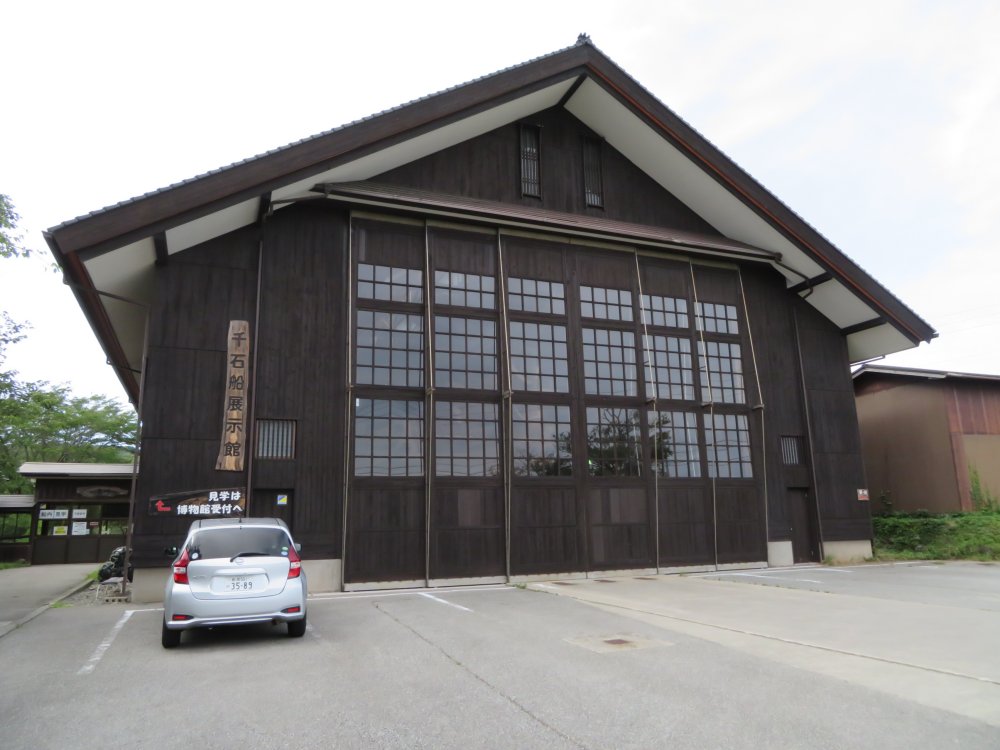
The interior of former residence of Seikurou. It is a magnificent two story Japanese building using the finest building material.
On the final day, we first went to Akadomari, which is a port town on the south coast. This was the landing port of the Tokugawa governor. We entered the local history museum which was in the town’s public hall right in front of Akadomari Port. The admission fee was 200 yen. There were many displays of the local festivities including a sumo bout on an offshore ring. While I was surprised at the variety of the festivities, I imagined it must be a real challenge to maintain the tradition because of the serious depopulation of the area.
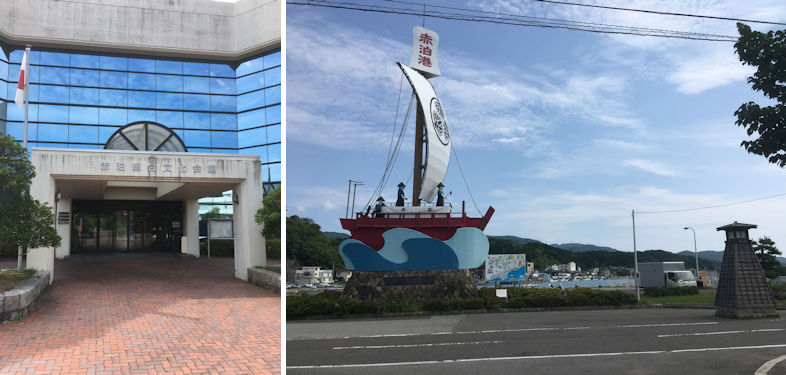
We entered the local history museum which was in the town’s public hall (left) and Port of Akadomari (right). The emblem of the Tokugawa shogunate can be seen.
On our way to Ryoutsu Port, we made two small trips. First we visited Sado History and Folklore Museum in Mano Town. They have an interesting display featuring lifelike robots of Juntoku, Nichiren and Zeami all exiled to Sado that tell their stories. It is housed in a beautiful building by a pond.
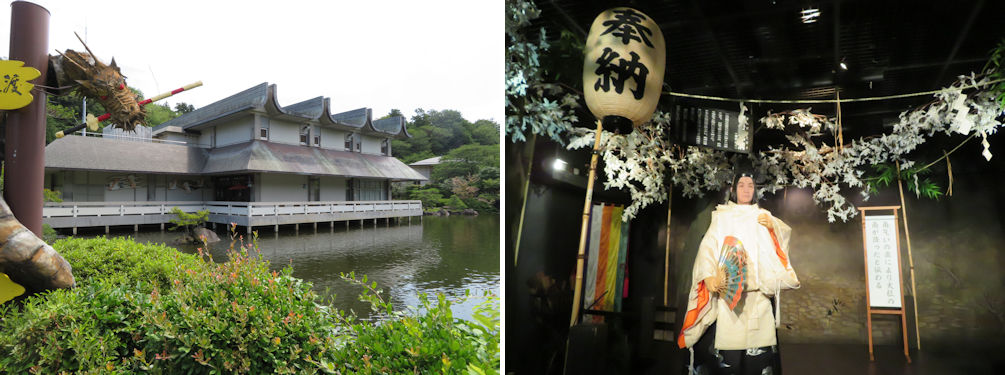
Sado History and Folklore Museum in Mano Town has an interesting display featuring lifelike robots of Juntoku, Nichiren and Zeami all exiled to Sado that tell their stories(right). It is housed in a beautiful building by a pond (left).
Finally, we visited the Hakuundai Observation Deck in the mountains at an altitude of 850 meters above sea level. It was a clear day, and we were able to command a great view of Ryoutsu Port and the opposite area of Aikawa. This concluded our exciting four day travel of Sado.
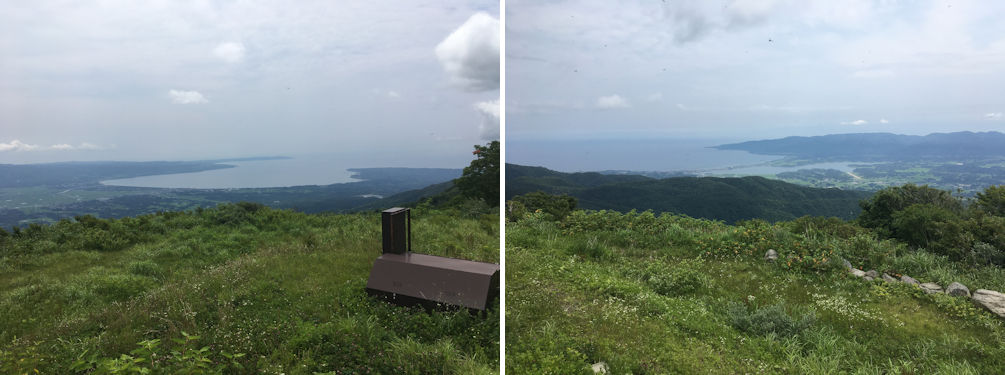
Aikawa area (left) and Ryoutsu area (right) from Hakuundai Observation deck.